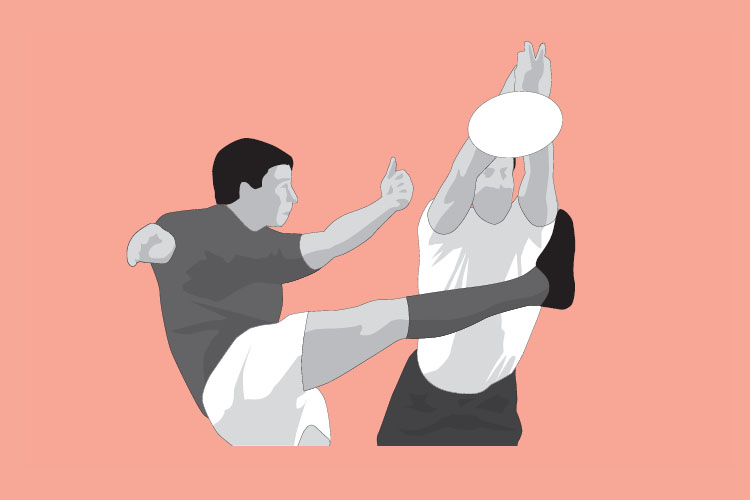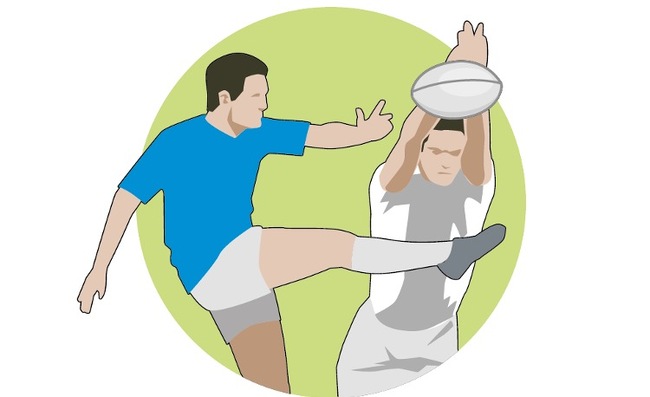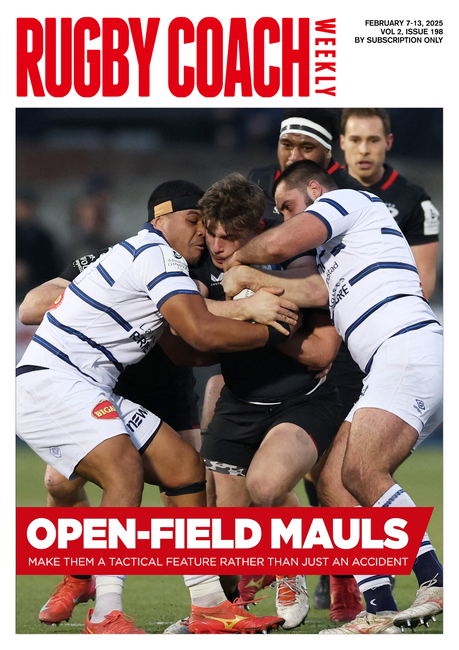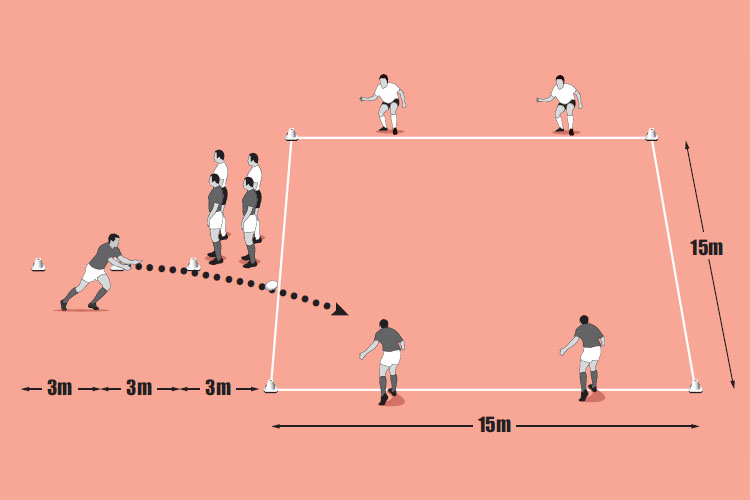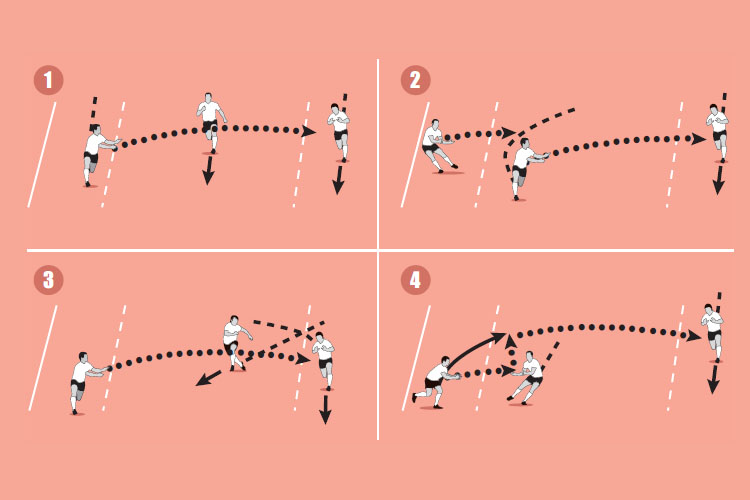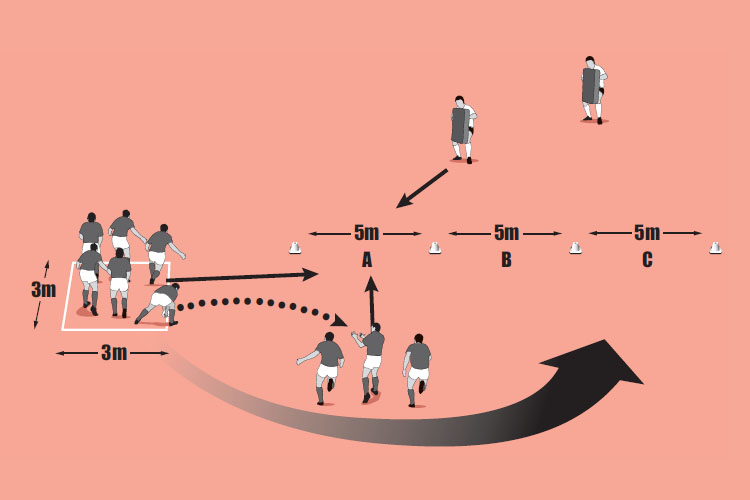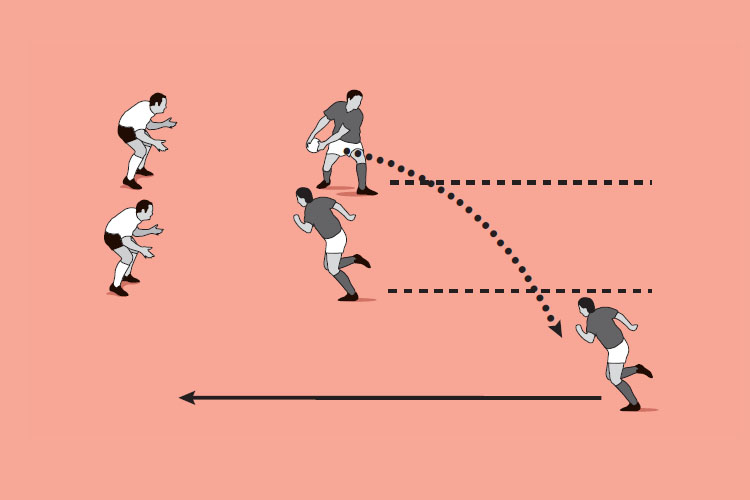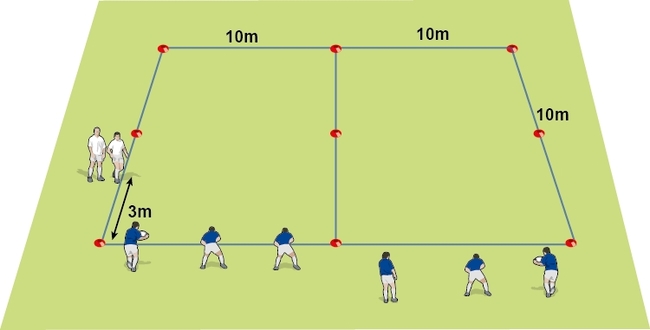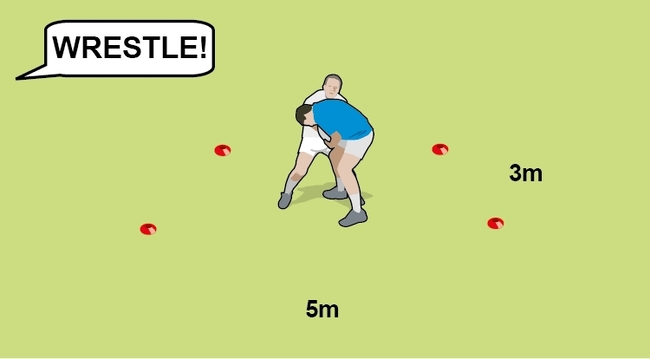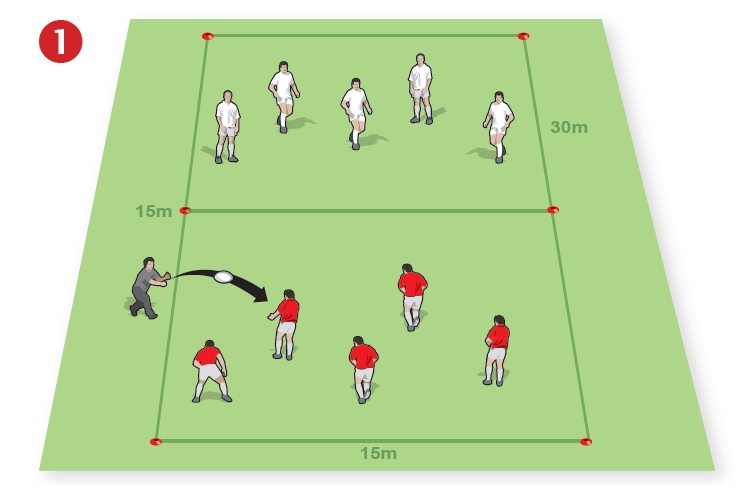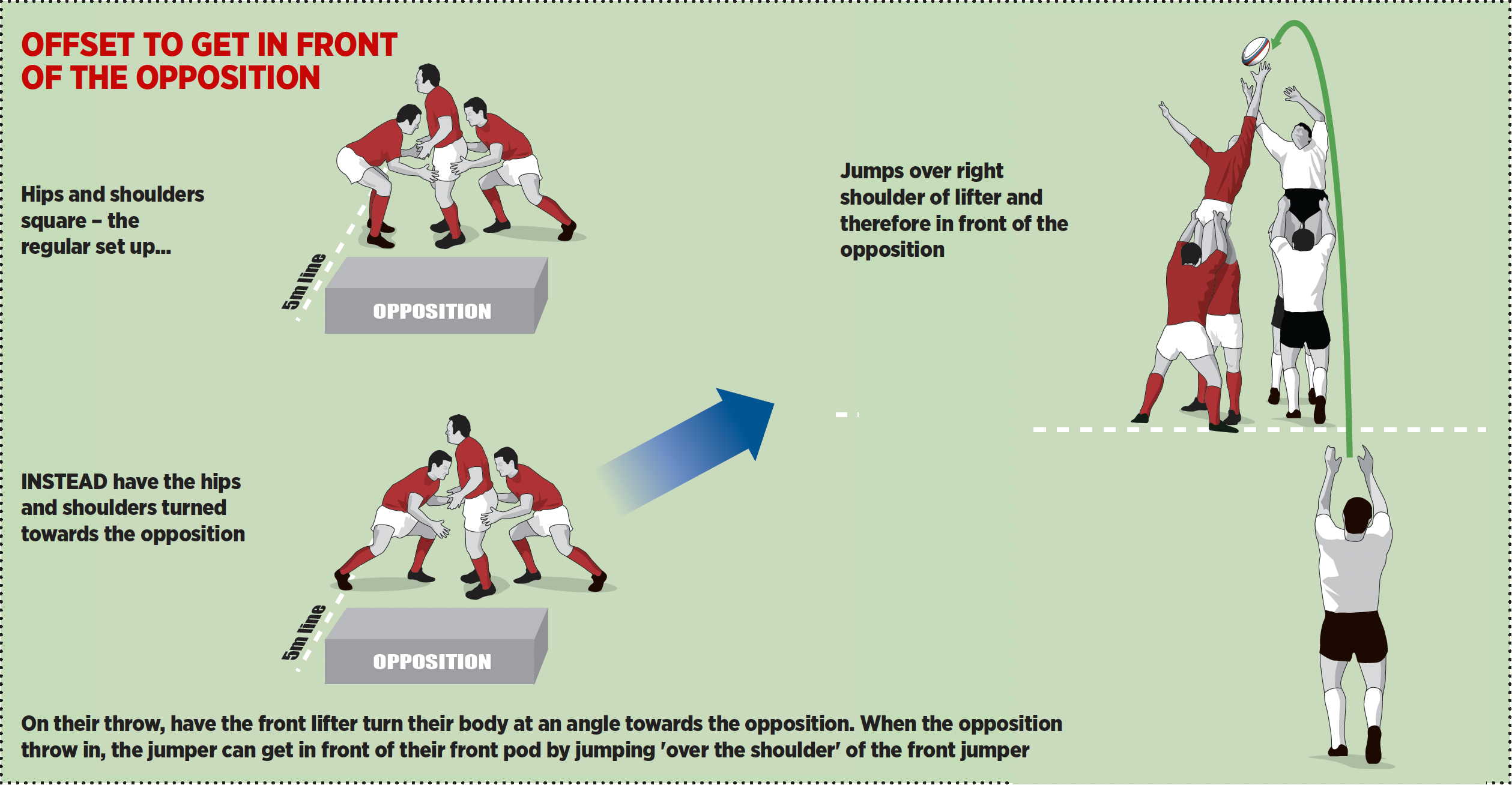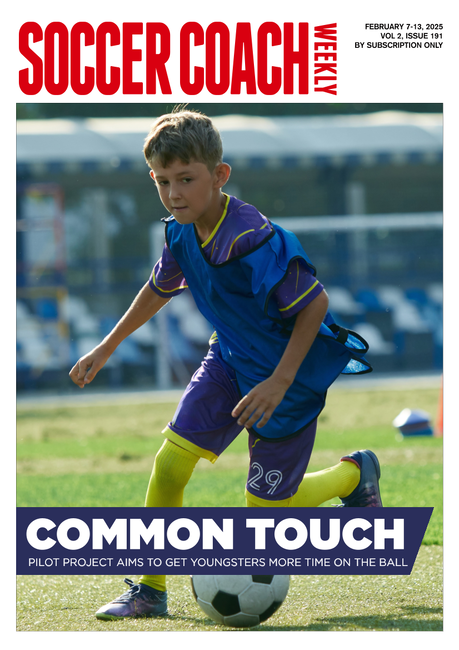Charge downs
Teams often need to kick out of their 22 and you can pressurise kickers by charging down their kicks. This session makes chargers focus on the kicking foot and the potential outcomes the kicker is looking for.
Warm up time: 5-7
Session time: 8-10
Development time: 10-15
Game time: 10-15
Warm down time: 5-8
What to think about
The best chargers “read” the kicker’s actions so they intercept the kick, rather than just appear in front of the kicker by chance. That means the charger needs to know which foot the kicker kicks with. With that information, he can angle towards that foot, given the kicker will move to their left if he is kicking with his left foot and vice versa. The charger needs to get his arms and elbows in front of his head, so he has less fear of the ball flying into his face. He also needs both arms up to create a larger area to prevent the kick and be strong as the ball makes impact.set-up
- Read what foot the kicker is going to use.
- Attack the space where he is going to make the kick, not where he is standing now.
- Get both arms up and in front of you and follow through (see picture 1).
What you get your players to do
Set up the cones and players as in picture 2. Indicate which gate the kicker is to kick from. The feeder passes the ball to the kicker, who aims to kick the ball into his target zone. The charging player sets off at the same time as the pass to block the kick.Development
The feeder can box kick. The kicker does not have to go through the gate indicated (but must still aim for the targets).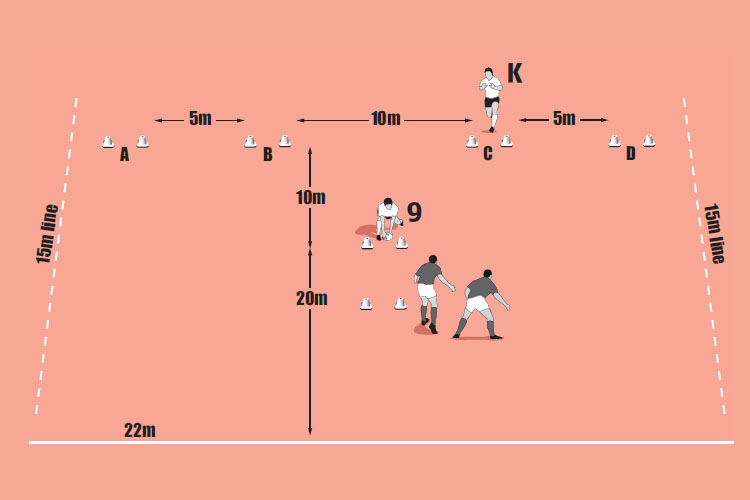
Game situation
Play a game of 4 v 4 (or more) touch rugby plus one player behind each team. The team in possession passes and runs as normal but can use the player behind to kick into coned-off target areas say 10m x 5m. Only he can kick into target areas (see picture 3). If he is charged down, his team loses a point. If the ball goes dead, it loses a point as well. Use onehanded touch, with the tackled player turning around to pass the ball from the ground (creating an offside line). Each team has four touches before a turnover.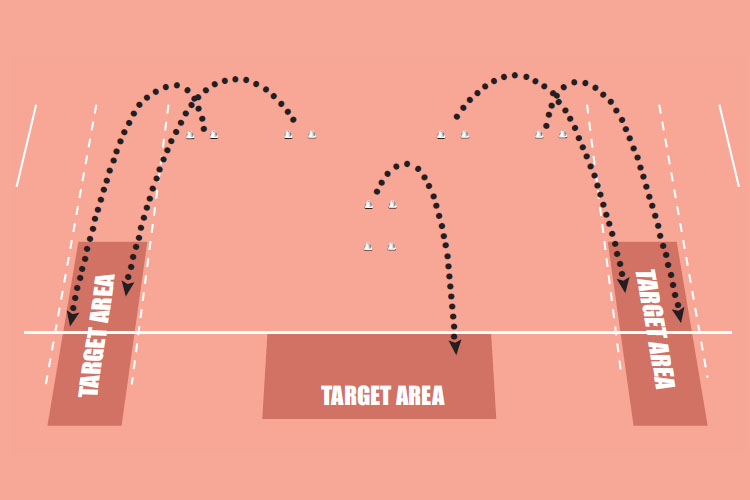
What to call out
- “Don’t hold back – the charge down might miss but the action will hurry the kicker”
- “Get the arms and hands high, and dive at end if necessary to get over the ball”
- “Stay inside the kicker as you line up”
Newsletter Sign Up
Coaches Testimonials

Gerald Kearney, Downtown Las Vegas Soccer Club

Paul Butler, Florida, USA

Rick Shields, Springboro, USA

Tony Green, Pierrefonds Titans, Quebec, Canada
Subscribe Today
Be a more effective, more successful rugby coach
In a recent survey 89% of subscribers said Rugby Coach Weekly makes them more confident, 91% said Rugby Coach Weekly makes them a more effective coach and 93% said Rugby Coach Weekly makes them more inspired.
Get Weekly Inspiration
All the latest techniques and approaches
Rugby Coach Weekly offers proven and easy to use rugby drills, coaching sessions, practice plans, small-sided games, warm-ups, training tips and advice.
We've been at the cutting edge of rugby coaching since we launched in 2005, creating resources for the grassroots youth coach, following best practice from around the world and insights from the professional game.
